
A mandolin is a stringed musical instrument in the lute family and is generally plucked with a pick. It most commonly has four courses of doubled strings tuned in unison, thus giving a total of eight strings. A variety of string types are used, with steel strings being the most common and usually the least expensive. The courses are typically tuned in an interval of perfect fifths, with the same tuning as a violin. Also, like the violin, it is the soprano member of a family that includes the mandola, octave mandolin, mandocello and mandobass.
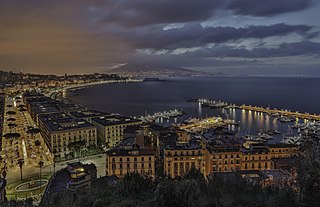
Naples is the regional capital of Campania and the third-largest city of Italy, after Rome and Milan, with a population of 909,048 within the city's administrative limits as of 2022. Its province-level municipality is the third-most populous metropolitan city in Italy with a population of 3,115,320 residents, and its metropolitan area stretches beyond the boundaries of the city wall for approximately 20 miles.

Luigi Denza was an Italian composer.

The mandocello is a plucked string instrument of the mandolin family. It is larger than the mandolin, and is the baritone instrument of the mandolin family. Its eight strings are in four paired courses, with the strings in each course tuned in unison. Overall tuning of the courses is in fifths like a mandolin, but beginning on bass C (C2). It can be described as being to the mandolin what the cello is to the violin.
Napleshas played an important and vibrant role over the centuries not just in the music of Italy, but in the general history of western European musical traditions. This influence extends from the early music conservatories in the 16th century through the music of Alessandro Scarlatti during the Baroque period and the comic operas of Pergolesi, Piccinni and, eventually, Rossini and Mozart. The vitality of Neapolitan popular music from the late 19th century has made such songs as'O Sole mio and Funiculì Funiculà a permanent part of our musical consciousness.

The mandore is a musical instrument, a small member of the lute family, teardrop shaped, with four to six courses of gut strings and pitched in the treble range. Considered a French instrument, with much of the surviving music coming from France, it was used across "Northern Europe" including Germany and Scotland. Although it went out of style, the French instrument has been revived for use in classical music. The instrument's most commonly played relatives today are members of the mandolin family and the bandurria.
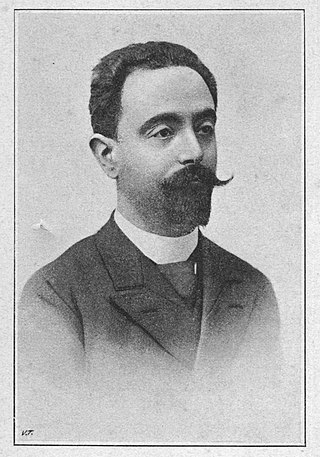
Carlo Munier (1858–1911) was an Italian musician who advocated for the mandolin's acknowledgement among as an instrument of classical music and focused on "raising and ennobling the mandolin and plectrum instruments". He wanted "great masters" to consider the instrument and raise it above the level of "dilettantes and street players" where it had been stuck for centuries. He expected that the mandolin and guitar would be taught in serious orchestral music schools and incorporated into the orchestra. A composer of more than 350 works for the mandolin, he led the mandolin orchestra Reale circolo mandolinisti Regina Margherita named for its patron Margherita of Savoy and gave the queen instruction on the mandolin. As a teacher, he wrote Scuola del mandolino: metodo completo per mandolino, published in 1895.

Avi Avital is an Israeli mandolinist. He is best known for his renditions of well-known Baroque and folk music, much of which was originally written for other instruments. He has been nominated for a Grammy award and in 2013 signed a record agreement with Deutsche Grammophon.
Dorina Frati is an Italian classical mandolin player. She performs regularly with European orchestras such as The Philharmonic of La Scala, the National Academy of Santa Cecilia, the National Orchestra of RAI, the Chamber Orchestra of Mantua and the Philharmonic of Rome. She completed her studies with Giuseppe Anedda, graduating from the Pollini Conservatory of Padua, Italy.

Ferdinando de Cristofaro was one of the most celebrated mandolin virtuosi of the late 19th Century. He was also a classical pianist, teacher, author and composer, who performed at the chief courts of Europe, and received the royal appointment of mandolinist to the King of Italy.
Carmine de Laurentiis was a 19th-century Italian mandolinist, musical educator, author and composer who taught mandolin and guitar in Naples. His only well-known student was Carlo Munier. He wrote a mandolin method, Metodo per Mandolino, that was published in Milan in 1874, reported the following year in the Musical World. The article mentioning Laurentiis' method talked about the decline of the mandolin, calling the mandolin "entirely out of fashion."

Giuseppe Anneda was an Italian mandolin virtuoso who helped the mandolin gain more importance in the classical music world in the 20th Century. He performed with his instrument in concert halls around the world, including some where mandolin "had never entered", and taught at the Conservatory Pollini of Padua He also was able to gain access to manuscripts in museums, rediscovering works by Vivaldi, Pergolesi, Beethoven and many others.
Ugo Orlandi is a musicologist, a specialist in the history of music, a university professor and internationally renowned mandolinist virtuoso. Among worldwide musicians, professional classical musicians are a small group; among them is an even smaller group of classical mandolinists. Among members of this group, Ugo Orlandi is considered "distinguished." Music historian Paul Sparks called him "a leading figure in the rehabilitation of the eighteenth-century mandolin repertoire, having recorded many concertos from this period."

Pasquale Vinaccia was an Italian luthier, appointed instrument-maker for the Queen of Italy, and maternal grandfather to Carlo Munier. In 1835 he improved the mandolin, creating a version of the instrument that used steel wires for strings, known today as the "Neapolitan Mandolin." His use of steel strings has become the dominant way of stringing mandolins.
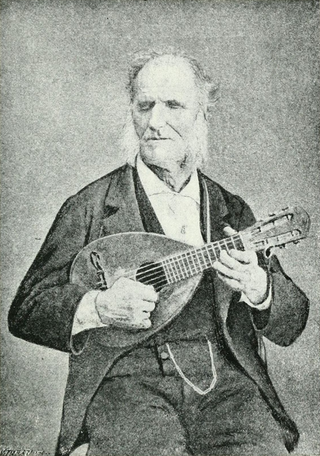
Giovanni Vailati was an Italian mandolinist who reached the virtuosic-level of playing ability and was able to travel and perform throughout Europe. Entirely self taught on his instrument, he was described by Philip J. Bone as a "natural genius on his instrument, who by his remarkable performances, became known throughout his native land as 'Vailati the blind, the Paganini of the mandolin.'" He is important as one of the first generations of quality performers to use mandolin. He was one of a small number of mandolinists of the 19th century to play the mandolin in the concert halls of Europe after the Napoleonic War, who played with excellence in spite of indifference and diffidence toward their chosen instrument. Pietro Vimercati was another, whose concerts predated Vailati's by about 30 years. Also performing in Europe in the years following 1815 was Luigi Castellacci.

Vincent Beer-Demander, born in Paris in 1982, is a French mandolinist and composer. He participates in lessons of several music schools and numerous musical events, in France and abroad, in particular of the Mandol'in Ariège festival of which he was one of the main creators and organizers. He also composes works, published by several music publishers.
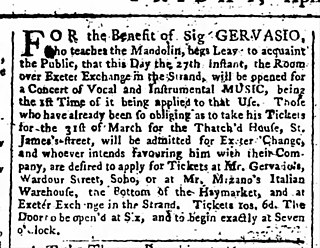
Giovanni Battista Gervasio was an Italian musician and composer. Born in Naples he was one of the first generation of virtuoso-mandolinists who left Italy and played the mandolin in Europe in the 18th century. He was a composer for the mandolin and his works can be found scattered in 18th century collections such as the Gimo music collection and the Bibliothèque Nationale de France. He also wrote a mandolin method Methode facile pour apprendre a quatre cordes, instrument pour les dames, published in Paris in 1767. He performed in London 1768 and in Frankfurt-on-the-Main on December 10, 1777, and the Concert Spirituel in Paris on December 24, 1784. He advertised in 1785 that he was master of singing and mandolin to Her Royal Highess, the Princess of Prussia. A work of music addressed to her exists today in the Bibliothèque Nationale de France.
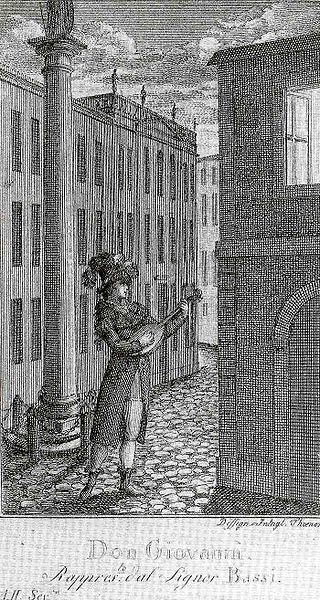
The mandolin is a modern member of the lute family, dating back to Italy in the 18th century. The instrument was played across Europe but then disappeared after the Napoleonic Wars. Credit for creating the modern bowlback version of the instrument goes to the Vinaccia family of Naples. The deep bowled mandolin, especially the Neapolitan form, became common in the 19th century, following the appearance of an international hit, the Spanish Students. They toured Europe and America, and their performances created a stir that helped the mandolin to become widely popular.

Following its invention and development in Italy the mandolin spread throughout the European continent. The instrument was primarily used in a classical tradition with mandolin orchestras, so called Estudiantinas or in Germany Zupforchestern, appearing in many cities. Following this continental popularity of the mandolin family, local traditions appeared outside Europe in the Americas and in Japan. Travelling mandolin virtuosi like Carlo Curti, Giuseppe Pettine, Raffaele Calace and Silvio Ranieri contributed to the mandolin becoming a "fad" instrument in the early 20th century. This "mandolin craze" was fading by the 1930s, but just as this practice was falling into disuse, the mandolin found a new niche in American country, old-time music, bluegrass and folk music. More recently, the Baroque and Classical mandolin repertory and styles have benefited from the raised awareness of and interest in Early music.














